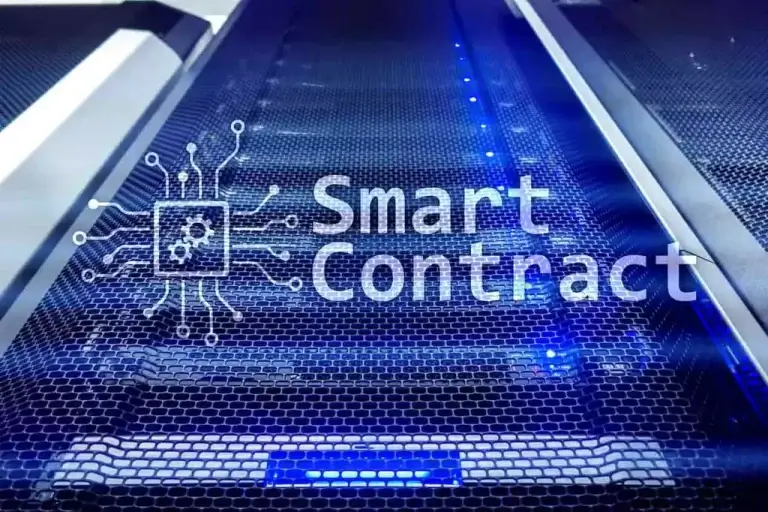In an era dominated by digital media, capturing and maintaining viewer attention has become an essential skill for designers, marketers, and developers alike. Visual stimuli that stand out amidst a flood of information can significantly influence user engagement and decision-making. Among various techniques, pulsating animations have emerged as a prevalent and effective method to draw the eye naturally and subconsciously.
もくじ
- 1 Table of Contents
- 2 Understanding Pulsating Animations: Visual Dynamics and Human Perception
- 3 The Science Behind Attention: How Dynamic Stimuli Engage the Brain
- 4 From Classic Games to Modern Design: The Evolution of Attention Capture
- 5 The Role of Pulsating Animations in Contemporary Digital Products
- 6 Non-Obvious Aspects of Pulsating Animations: Depth and Nuance
- 7 Technological Foundations and Limitations
- 8 Future Trends: The Evolution of Attention-Grabbing Animations
- 9 Conclusion: Harnessing Pulsating Animations Responsibly for Engagement
Table of Contents
- Understanding Pulsating Animations: Visual Dynamics and Human Perception
- The Science Behind Attention: How Dynamic Stimuli Engage the Brain
- From Classic Games to Modern Design: The Evolution of Attention Capture
- The Role of Pulsating Animations in Contemporary Digital Products
- Non-Obvious Aspects of Pulsating Animations: Depth and Nuance
- Technological Foundations and Limitations
- Future Trends: The Evolution of Attention-Grabbing Animations
- Conclusion: Harnessing Pulsating Animations Responsibly for Engagement
Understanding Pulsating Animations: Visual Dynamics and Human Perception
What are pulsating animations and how do they function visually?
Pulsating animations involve a visual element that repeatedly expands and contracts, creating a rhythmic “heartbeat” effect. This cyclical change in size or intensity draws attention due to its dynamic nature. For example, a button on a website might gently grow and shrink to indicate interactivity, or a notification icon could pulse to alert the user to new information.
The psychological basis for attention-grabbing effects of pulsation
Humans are biologically wired to respond to movement and change. The rhythmic expansion and contraction of pulsating visuals activate our innate attention mechanisms, making these stimuli more noticeable than static images. Studies show that rhythmic motion can trigger the brain’s mirror neuron system, fostering a subconscious focus that enhances perception and recall.
Contrast with static visuals: Why movement matters
Static images often blend into the background, especially when surrounded by other content. In contrast, movement—like pulsation—creates a visual disturbance that captures attention quickly. This is why animated cues are more effective in guiding user focus and improving interaction rates.
The Science Behind Attention: How Dynamic Stimuli Engage the Brain
Neural mechanisms responding to rhythmic and pulsating visuals
Research using neuroimaging techniques reveals that rhythmic and pulsating stimuli activate regions in the occipital and parietal lobes responsible for motion detection and attention allocation. Rhythmic patterns can synchronize neural oscillations, reinforcing focus and improving information retention.
The role of contrast, brightness, and motion in perception
High contrast and brightness amplify the visibility of pulsating elements, making them stand out even more. When combined with motion, these factors create a compelling visual cue that effectively captures attention, as demonstrated by warning lights or alert icons on digital interfaces.
Examples from everyday life: Car horns, alert signals, and game interactions
Everyday stimuli such as honking horns, flashing warning lights, or vibrating notifications leverage pulsation principles to grab our attention swiftly. In gaming, elements like health bars or interactive prompts often pulse to guide player focus, exemplifying how pulsating animations tap into our natural perceptual tendencies.
From Classic Games to Modern Design: The Evolution of Attention Capture
Historical perspective: From Pac-Man maze intersections to today’s interfaces
Early video games like Pac-Man used movement and flashing at maze intersections to direct players’ attention and influence their decisions. These simple yet effective visual cues laid the groundwork for modern attention-grabbing techniques, which have evolved into sophisticated animations in digital interfaces.
Case study: How Pac-Man’s movement mechanics exemplify attention-focused design
Pac-Man’s movement and the flashing of power pellets exemplify how dynamic visuals guide user focus. The game’s mechanics leverage motion to focus players’ attention on specific in-game elements, a principle that remains fundamental in current UI/UX design.
The influence of game logic processing (e.g., JavaScript V8 engine) on visual effects in games like Chicken Road 2
Modern web-based games utilize advanced JavaScript engines like V8 to create smooth, complex animations, including pulsating effects. These effects help direct player attention effectively, as seen in games such as quick play, where pulsating elements guide interactions seamlessly, demonstrating the enduring importance of visual dynamics.
The Role of Pulsating Animations in Contemporary Digital Products
Enhancing user engagement in mobile and web applications
Pulsating animations are widely employed to increase engagement by highlighting actionable elements like buttons, notifications, or call-to-action prompts. Their rhythmic movement draws attention without overwhelming users, encouraging interaction.
Case example: Chicken Road 2’s use of pulsating elements to direct player focus
In quick play, pulsating visuals are strategically used to guide players towards important game elements, such as power-ups or hazards. This subtle yet effective technique ensures players remain attentive and engaged, illustrating how modern design leverages pulsation for improved user experience.
Balancing attention-grabbing visuals with user experience (avoiding overstimulation)
While pulsating effects can be highly effective, overuse may lead to visual fatigue or overstimulation. Responsible design involves moderation, ensuring that animations enhance rather than hinder usability, and are accessible to users with sensitivities.
Non-Obvious Aspects of Pulsating Animations: Depth and Nuance
Cultural and contextual factors influencing perception of pulsation
Perception of pulsating visuals can vary across cultures and contexts. For instance, in some cultures, rapid flashing may be associated with danger or caution, affecting how users interpret pulsating cues.
Subtle variations in pulsation frequency and their psychological impacts
Adjusting the speed or intensity of pulsation can evoke different emotional responses. A slow, gentle pulse might promote calmness, while rapid pulsation can increase urgency or excitement, allowing designers to tailor effects to desired user reactions.
The importance of timing and synchronization in dynamic visual cues
Precise timing and synchronization of pulsating effects with other game or interface elements enhance their effectiveness. For example, synchronizing pulsation with audio cues can reinforce attention, as seen in alert systems or interactive gaming interfaces.
Technological Foundations and Limitations
How modern rendering engines (e.g., JavaScript V8) enable complex animations
Advanced JavaScript engines like V8 facilitate high-performance rendering of complex animations, including smooth pulsating effects. These engines optimize code execution, allowing developers to create visually appealing and responsive interfaces that can adapt dynamically to user interactions.
Challenges in optimizing pulsating effects for performance and accessibility
High-frequency or intense pulsation can tax system resources and may pose accessibility issues for users with sensitivities to flashing or motion. Optimization involves balancing visual quality with system performance and adhering to accessibility guidelines.
The impact of hardware and sound levels (e.g., 110-decibel horns) on attention in real-world settings
Physical stimuli like loud horns or flashing lights in real environments leverage pulsation principles to command attention effectively. While digital effects are visual, understanding their real-world counterparts underscores the fundamental role of rhythmic stimulation in human attention.
Future Trends: The Evolution of Attention-Grabbing Animations
Integration with augmented reality and virtual reality experiences
As AR and VR technologies mature, pulsating effects will become more immersive, responding to user movements and environmental cues to enhance attention and interaction in three-dimensional spaces.
Adaptive pulsating effects driven by user interaction and AI
Artificial intelligence can tailor pulsating effects in real-time based on user behavior, optimizing engagement without causing fatigue or overstimulation. This personalized approach ensures that attention cues remain effective and comfortable.
Ethical considerations: avoiding manipulation and overstimulation
While pulsating animations are powerful, ethical design requires moderation to prevent overuse that can lead to distraction, anxiety, or adverse health effects. Responsible designers balance attention capture with user well-being.
Conclusion: Harnessing Pulsating Animations Responsibly for Engagement
Pulsating animations embody a timeless principle of visual dynamics—movement inherently attracts human attention. Modern technology has amplified their effectiveness, enabling nuanced and sophisticated applications across digital products. However, their power must be wielded responsibly.
In practice, designers and developers should consider cultural factors, user sensitivities, and context when implementing pulsating effects. When used judiciously, these animations can significantly enhance user engagement and guide interaction seamlessly, as exemplified by contemporary games like quick play.
“Effective attention capture balances visual appeal with user comfort, ensuring that dynamic cues serve as helpful guides rather than intrusive distractions.”
Ultimately, understanding the science and technology behind pulsating animations empowers creators to craft engaging, accessible, and ethically responsible visual experiences that resonate with users in a rapidly evolving

























